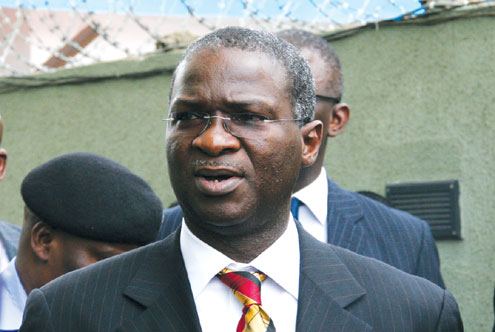In an apparent bid to curb the spate of crime, the government of Lagos State has activated over a thousand closed-circuit television (CCTV) security cameras, in addition to existing ones.

By implication, Lagosians will be continuously monitored by in-house television cameras but, thankfully, not by personal audio microphones; as it is the case in Big Brother, the popular reality game show that features a group of people (or housemates) living together in a large, usually specially constructed house.
During their time in the house, Big Brother housemates are isolated from the outside world and are not commonly aware of outside events. However, that is not the case for residents of the overcrowded city of Lagos who are neither housemates nor placed in an enclosure.
Nonetheless, Governor Babatunde Fashola, in collaboration with the Federal Government, has deployed the cameras in strategic places across the state. Additionally, the newly-reconstructed Isopakodowo Market in Oshodi is equipped with 64 CCTVs to provide security for the facility.
On the necessity of CCTVs to the state’s security, Fashola said that besides the fact that it has become a common practice in modern cities such as London in the United Kingdom, the rise in the population of Lagos far outstrips any increase in the number of police officers in the foreseeable future.
“So we are going to continue to rely on about 33,000 police officers spread over eight area commands and 84 divisional headquarters, to police 18 million people,” he lamented, pointing out that, on the average, it amounts to a ratio of one police officer to 600 people.
During the 1990s, CCTV surveillance technology was an increasingly important and visible part of crime and nuisance prevention measures in town and city centres throughout the UK. The Home Office, police forces and many local authorities expressed support for CCTV and they often report reductions in reported crime levels and in the fear of crime following the introduction of the devise.
However, there are concerns about its cost-effectiveness and about a number of legal, personal privacy and civil liberties issues.
The first CCTV system was installed by Siemens AG at Test Stand VII in Peenemünde, Germany in 1942, for observing the launch of V-2 rockets. The noted German engineer, Walter Bruch, was responsible for the technological design and installation of the system.
In the U.S., the first commercial CCTV system became available in 1949, called Vericon. Very little is known about Vericon except it was advertised as not requiring a government permit.
The earliest systems required constant monitoring because there was no way to record and store the information. Recording systems were later introduced, when primitive reel-to-reel media was used to preserve the data, where the magnetic tapes had to be changed manually. It was a time consuming, expensive and unreliable process; the operator had to manually thread the tape from the tape reel through the recorder onto an empty take-up reel. Due to these efforts, video surveillance was rare. Only when VCR (video cassette recorder) technology became available in the 1970s, which made it easy to record and erase information, did video surveillance start to become much more common.
In September 1968, Olean, New York was the first city in the United States to install video cameras along its main business street in an effort to fight crime. From the mid-1990s on, police departments across the country installed an increasing number of cameras in various public spaces including housing projects, schools and public parks departments. Following the September 11 attacks, the use of video surveillance became a common occurrence in the country to deter future terrorist attacks.
The CCTV later became very common in banks and stores to discourage theft, by recording evidence of criminal activity. Their use further popularised the concept. The first place to use CCTV in the United Kingdom was King’s Lynn, Norfolk.
In recent decades, especially with general crime fears growing in the 1990s and 2000s, public space use of surveillance cameras has emerged, and Lagos in Nigeria is not an exception. Experiments in the UK during the 1970s and 1980s, led to several larger trial programmes later that decade.
These were deemed successful by the government, and paved the way for a massive increase in the number of CCTV systems installed. Today, systems cover most town and city centres, and many stations, car-parks and estates.
In fact, a report, which claims that the average person on a typical day would be seen by 70 CCTV cameras, estimates that the number of cameras in the UK is 1.85 million. A survey of Scottish local authorities identified that there are over 2,200 public space CCTV cameras in Scotland.
Against the backdrop of strong anecdotal evidence that CCTV aids in detection and conviction of offenders, and plays a crucial role in tracing the movements of suspects or victims, it is expected that the device will be widely utilised in the coming years not only in Lagos, but also in other parts of the country.
